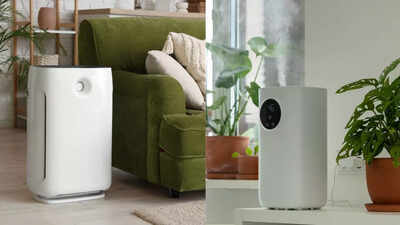With growing concern about indoor air quality, more people are investing in devices designed to create a healthier, more comfortable home environment. Among the most popular options are air purifiers and humidifiers, both of which improve indoor conditions but serve entirely different purposes. Air purifiers focus on cleaning the air by removing pollutants, allergens, and odours, while humidifiers add moisture to prevent dryness and irritation. Knowing the distinction between the two helps you choose the right solution for your specific needs, whether it’s easing respiratory discomfort, tackling pollution, or restoring moisture to dry indoor air. Understanding how they work ensures a cleaner, more balanced living space.
Key differences between air purifiers and humidifiers
Air purifiers
An air purifier is designed to remove airborne particles, pollutants, and allergens from the air. It draws in indoor air, filters it through specialised media, and then circulates the purified air back into the room.How air purifiers workAir purifiers typically use HEPA filters to trap dust, pollen, pet dander, mould spores, and smoke. Some models include activated carbon filters to absorb odours and gases, or UV light to neutralise bacteria and viruses. The result is cleaner, fresher air that supports respiratory health and reduces allergy triggers.Benefits of using an air purifier
- Reduces allergens and pollutants: Helps individuals with asthma, allergies, or respiratory sensitivities.
- Removes unpleasant odours: Neutralises smells from cooking, pets, or smoke.
- Improves sleep quality: Cleaner air supports easier breathing and better rest.
- Protects against pollution: Particularly useful in urban or industrial areas with poor outdoor air quality.
Things to considerAir purifiers do not add moisture to the air. In fact, if your indoor air is too dry, you might still experience dryness in the throat or nasal passages. Regular filter replacement and cleaning are essential to maintain effectiveness.
Humidifiers
A humidifier serves a completely different purpose; it adds moisture to the air to maintain an optimal humidity level, usually between 40% and 60%. This is especially useful during winter months or in dry climates where heating systems strip moisture from the air.How humidifiers workHumidifiers release water vapour or a fine mist into the air, increasing humidity levels. Depending on the model, this can be achieved through ultrasonic vibrations, evaporation, or steam generation.Benefits of using a humidifier
- Relieves dry skin and irritation: Keeps your skin, eyes, and throat hydrated.
- Eases breathing discomfort: Moist air soothes nasal passages and reduces congestion.
- Protects wood and furniture: Prevents cracking and warping caused by excessive dryness.
- Improves comfort in winter: Balances the dryness caused by central heating systems.
Things to considerA humidifier does not clean or filter the air. If overused, it can make the room too humid, creating a breeding ground for mould, bacteria, or dust mites. Cleaning the device regularly and using distilled water can prevent these issues.Choose an air purifier if:You suffer from allergies, asthma, or frequent respiratory issues.You live in an area with heavy traffic, dust, or industrial pollution.You want to remove smoke, pet odours, or airborne contaminants.Choose a humidifier if:Your indoor air feels dry and causes skin or throat irritation.You experience nosebleeds or sinus issues during winter.Your furniture or wooden floors are cracking due to dryness.
Can you use both together
In some homes, using both an air purifier and a humidifier together creates the ideal balance. The purifier cleans the air of pollutants, while the humidifier maintains comfortable moisture levels.However, they should not be placed too close together. Excess moisture from a humidifier can affect the air purifier’s filters, reducing its performance. Keep them on opposite sides of the room and maintain both devices regularly for best results.
How to choose the right option for your home
When deciding between the two, consider the following:
- Assess your needs: Are you dealing with dryness or pollution?
- Check your environment: Cold, dry climates benefit from humidifiers; polluted urban areas need purifiers.
- Monitor humidity levels: A hygrometer can help ensure the humidity stays between 40–60%.
- Consider maintenance: Air purifiers require filter replacements, while humidifiers need cleaning and refilling.
- Room size matters: Choose devices with the capacity to handle your space efficiently.
Air purifiers and humidifiers both play valuable roles in improving indoor air quality, but they address entirely different needs.
- Air purifiers remove contaminants, promoting easier breathing and better overall health.
- Humidifiers restore moisture, bringing relief from dryness and irritation.
Understanding their differences ensures you invest in the right device, or use both in harmony, to create a healthier, more comfortable living environment.

